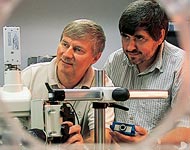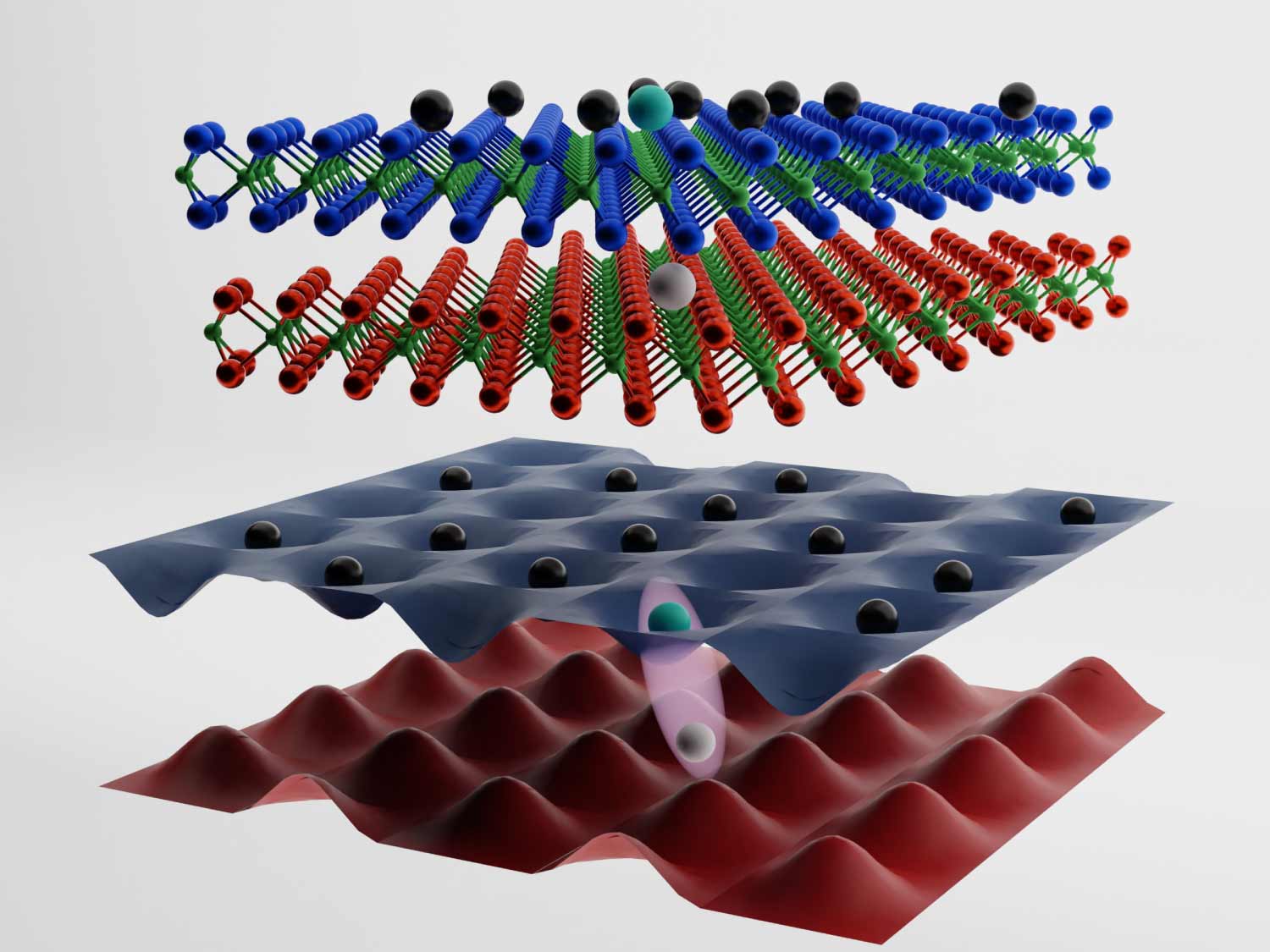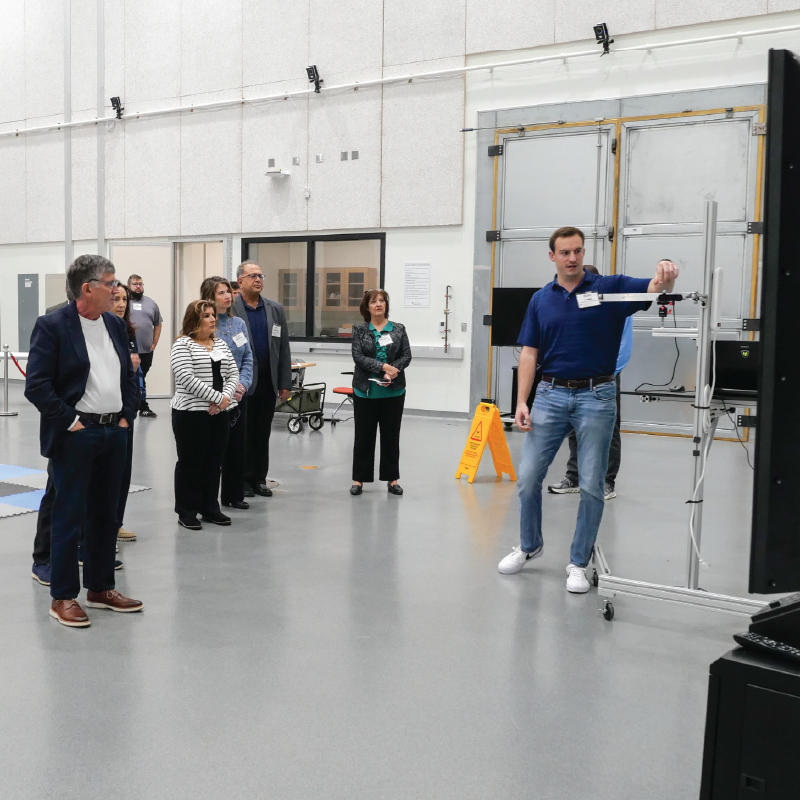News Story
Smolyaninov, Davis Published in Science for Superlens Microscope Research

This new technology could revolutionize the capability to view nanoscale objects at a crucial stage in the development of nanotechnology.
The team has developed a powerful, nanoscale microscope using advanced applications of plasmon technology. Plasmons, electron waves generated when light strikes a metallic surface, are utilized in the microscope to help scientists see fine, nano-scale details that were previously undetectable. The Science article, authored by Smolyaninov, Davis, and Yu-Ju Hung, documents the team's pioneering efforts in developing a superlens and integrating it into a conventional optical microscope to image objects smaller than the limit determined by the diffraction of light waves.
The team was also highlighted in an online news article on the Nature website for their innovation. The team's technology was also previously featured in an American Physical Society news article in October 2006.
Smolyaninov, who was recently named to the Scientific American 50 list, and Davis said that the two-dimensional plasmon microscope may potentially be ideal for imaging living cells, viruses, proteins, DNA molecules, and other samples, and could ultimately operate much like a point-and-shoot camera. The team believes they can improve the resolution of their microscope images down to around 10 nanometers. By comparison, the width of a human hair is approximately 80,000 nanometers. This new technology could revolutionize the capability to view nanoscale objects at a crucial stage in the development of nanotechnology.
Founded in 1880 on seed money from the American inventor Thomas Edison, Science has grown to become the world's leading outlet for scientific news, commentary, and cutting-edge research, with the largest paid circulation of any peer-reviewed general-science journal.
To read the journal article, visit the Science website.
Also see:
MIT Technology Review: Superlenses and Smaller Computer Chips
Physics Web (UK): Magnifying Superlenses Show More Detail Than Before
Chemistry World (UK): Could Nanofabricated Photonic Materials Lead to a Cloaking Device?
Published March 23, 2007









